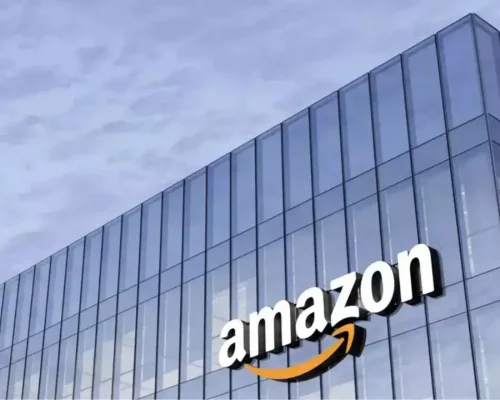It would be pretty easy to picture yourself walking through Target, picking up some random item from a shelf that was never on your shopping list, and then finding yourself worrying whether decisions made at the corporate level behind those shelves have an impact on people’s lives. The news that Target was getting rid of most of its staff at headquarters and in its other offices—the most significant move in 10 years—was what most people learned from a Target communication to its employees, issued on October 24, 2025. Though the shares have risen slightly—less than 1%—in after-hours trading, the news has sparked many questions, discussions, and comments about the initiative among affected people and Wall Street stakeholders. Why is the term “Target layoffs” getting so much media attention and prompting people to rush to check it out? It is not only about the figures, but also about a clear photo of the very harsh retail market, where one of the most loved brands is struggling with customer sales, competitors like Amazon and Walmart are rising, and a new CEO promising to cut red tape. This chopping of the tree with 440,000 employees in the U.S. will feel like a slap in the face for millions of people in the United States of America. I have been wondering about the reasons, the people, and what will happen next after the 1000-word deep dive into Target’s seismic shift.
What Are the Target Layoffs?
On October 23, 2025, Target Corporation, the big-box retailer based in Minneapolis with a chain of more than 1,900 stores, revealed a cut across the board corporate restructuring that saw the ax coming down on 1,800 jobs at its headquarters. Among these were 1,000 jobs to be cut right away and 800 positions that would not be backfilled, resulting in a reduction of the corporate workforce by about 8%. The news, delivered via memo from incoming CEO Michael Fiddelke, spares frontline store and supply chain staff, focusing instead on back-office bloat. Employees learn their fates as soon as Tuesday, October 28, with a company-wide remote work mandate through the week to ease the sting. Severance, extended benefits through January 3, and career support are promised, but the human toll looms large in a sector already reeling.
The Numbers Behind the Cuts
- Scale: 1,800 total roles gone, most significant since 2015’s 3,100 slash.
- Focus Areas: Leadership roles hit hardest, at triple the rate of others; merchandising, finance, and operations feel the pinch.
- Unaffected: Zero impacts to the 300,000+ store associates or distribution centers.
This isn’t panic, it’s precision, aimed at a leaner machine for tomorrow’s battles.
Why are Target Layoffs Trending Right Now?
October 24’s reveal has “Target layoffs” spiking 500% in U.S. Google searches, per Google Trends, as Americans digest the ripple effects on jobs and shopping habits. It’s the perfect storm: A retail icon, synonymous with affordable chic, admits vulnerability after 11 straight quarters of flat or falling sales. Coming hot on the heels of similar moves at Walmart and Starbucks, it taps into national anxieties over economic wobbles, with inflation lingering at 3.2% and consumer confidence dipping to 98.7 in September, per Conference Board data. Fiddelke’s candid memo, leaked to The Wall Street Journal, frames it as a “wake-up” that resonates with workers eyeing their own job security. For everyday folks, it’s personal: Target employs 440,000, and these cuts echo the 1.7 million retail jobs lost since 2020. Trending because it’s not abstract —it’s your Target run disrupted.
The Viral Memo That Lit the Fuse
Fiddelke’s words cut deep: “Too many layers and overlapping work have slowed decisions.” Shared widely on LinkedIn and Reddit, it humanizes the corporate churn, drawing 200,000 views by midday October 24. This transparency, rare in retail, amplifies the buzz, turning a dry announcement into a relatable rallying cry.
The Reasons Behind Target Layoffs
Target’s move isn’t knee-jerk; it’s a calculated response to a perfect storm brewing since 2022. Sales dipped 5.4% in Q2 2025, per earnings calls, as shoppers tighten belts amid 4.1% unemployment and rising grocery costs. Competitors like Costco (up 9%) and Amazon (Prime Day windfalls) erode market share, while Target’s missteps, post-pandemic overstocked inventory, and DEI backlash compound woes. Fiddelke, a 22-year Target vet, pins it on “complexity holding us back,” echoing a broader corporate purge wave. The goal? Streamline to speed innovation, like AI-driven personalization, to claw back 2-3% market share lost since 2023.
Core Challenges Fueling the Fire
- Sales Stagnation: 11 quarters of decline or flatline; Q3 2025 comps expected at -1.5%.
- Competitive Crush: Walmart’s prices undercut; Amazon’s speed dominates; Costco’s bulk wins loyalty.
- Internal Drag: Layers of approval stifle agility, e.g., a merchandising tweak took months, per insider leaks.
This restructuring isn’t just cost-cutting; it’s a bid for relevance in the $7 trillion U.S. retail market.
Incoming CEO Michael Fiddelke’s Vision
Mike Fiddelke, 48, the lifter of the Target weight, deciding to step up as CEO on February 1, 2026, is the next person to come into the picture. After serving as a 2003 intern, he moved from finance to COO in 2024, overseeing the Enterprise Acceleration Office, a department that combined tech and ops to deliver quicker wins. His memo depicts the layoffs as “necessary” to “bring ideas to life,” thereby prioritizing a flatter structure for faster pivots. Fiddelke is not unfamiliar with difficult decisions; he oversaw the 2023 supply chain overhaul that yielded $500 million in savings. At present, he is focusing on growth through simplified teams and setting a target of achieving a 5% increase in comp sales by 2027. Opponents refer to the strategy as “brutal efficiency”; however, proponents acknowledge a calm leader guiding Target through the storm.
Fiddelke’s Playbook
- Agility Focus: Cut layers to empower mid-levels; expect faster product launches, like next-gen Circle perks.
- Tech Tilt: Double down on AI for inventory to target a 20% reduction in waste.
- Culture Shift: Emphasize “guest-first” without the bloat, echoing his “protect and serve” intern days.
Under Fiddelke, Target bets on smarts over size.
Impact on Employees and Operations
For the 1,000 affected, it’s gut-wrenching: Pay through January, but uncertainty reigns until Tuesday notifications. Remote work eases immediate awkwardness, but morale dips; LinkedIn posts from Targets show “heartbroken” sentiments. Positively, store ops hum uninterrupted; 1,900 locations stay stocked. Broader, it signals retail’s remote-hybrid pivot, with Target’s 70% corporate WFH policy intact. Unions like UFCW eye organizing drives, citing “corporate greed.” Yet Fiddelke pledges “support services,” including outplacement to rivals —an irony, but pragmatic.
Employee Safeguards
- Severance Details: 16 weeks base, plus tenure bonuses; health coverage to March.
- Transition Aid: Career coaching, resume workshops; priority rehires if roles rebound.
- Remote Mandate: All U.S. HQ staff homebound next week, a “compassionate pause.”
It’s tough love, but with a safety net.
Broader Retail Trends and Comparisons
Target’s not alone; it’s retail’s reckoning. In 2024, Walmart dropped 1,500 jobs to focus on e-commerce, Starbucks laid off 2,000 employees amidst union fights, and Best Buy reduced its workforce by 5% to support omnichannel initiatives. The current layoffs are mainly due to changes since the pandemic: E-commerce is up 15% YoY (eMarketer), while the number of people entering stores is down 10%. There have been some reversals in the DEI area, with Target in 2024 reversing its position and thus being boycotted. The economic wind is still blowing, as evidenced by the 3.7% CPI, which keeps the company in need of doing business efficiently. Yet, optimists see upside: Leaner ops could yield 2-4% margins by 2026, per Barclays.
Peers in the Purge
- Walmart: 1,500 cuts (2024); focused on automation, sales up 6%.
- Starbucks: 2,000 roles gone; store remodels boost traffic 8%.
- Best Buy: 5% workforce trim; Geek Squad AI integration lifts Q3 12%.
Target joins the fray, betting cuts catalyze comebacks.
Lessons from Target’s Past Layoffs
Flashback to 2015: 3,100 jobs axed after Canada’s flop ($2B loss) and a 2013 breach (40M cards hit). That purge refocused on the U.S. core, sparking 2016-2019 growth (sales +30%). Today’s echo? Smaller scale, but same stakes, adapt or atrophy. Post-2015, Target rebounded with the Shipt acquisition and the launch of same-day delivery. History whispers: Pain now, payoff later.
Echoes of 2015
- Scale Shift: Then 13% HQ; now 8%, targeted, not sweeping.
- Rebound Recipe: Post-cuts, stock rose 50% in two years.
- Silver Lining: Freed $300M for innovations like Drive Up.
Patterns persist: Trim to thrive.
What’s Next for Target After Layoffs?
Post-cuts, Fiddelke’s Q4 2025 roadmap spotlights “guest velocity”, faster checkouts, and personalized apps. Expect 2026 launches: AI stylists in stores, expanded owned brands. Shares at $152 (up 0.8%) signal investor buy-in, but analysts like JPMorgan peg fair value at $160 if sales tick up 2%. Watch November’s Q3 earnings for the first post-layoff pulse. Long-term? A leaner Target could reclaim 1-2% share, but execution is key amid holiday rushes.
Horizon Highlights
- Q4 Priorities: Holiday inventory trim; Circle Week 2.0 for traffic.
- 2026 Bets: 50 new stores, e-comm 20% growth.
- Risk Radar: Boycott rebounds, labor unrest.
Wrapping Up Target Layoffs: Retail Resilience Tested
Target layoffs are not only the stories the media writes about, but also a reflection of the drastic changes in the retail industry. This change affects 1,800 people whose jobs are at risk, while the survival of a $100B empire is in question. Fiddelke’s “layers to lift” message sounds like a promise of agility, but the human side of the story reminds us that change still costs. As consumers, we are just spectators, but we cannot stop thinking about whether leaner ops will mean better prices. Will this be the reason for Target’s phoenix rise or just a further plunge? One thing is sure: In the core of America’s retail industry, every cut is like a knife that tells a story. What is your Target story, loyal hauls, or boycott blues? Share below; the shelf life of this shake-up is just beginning.





